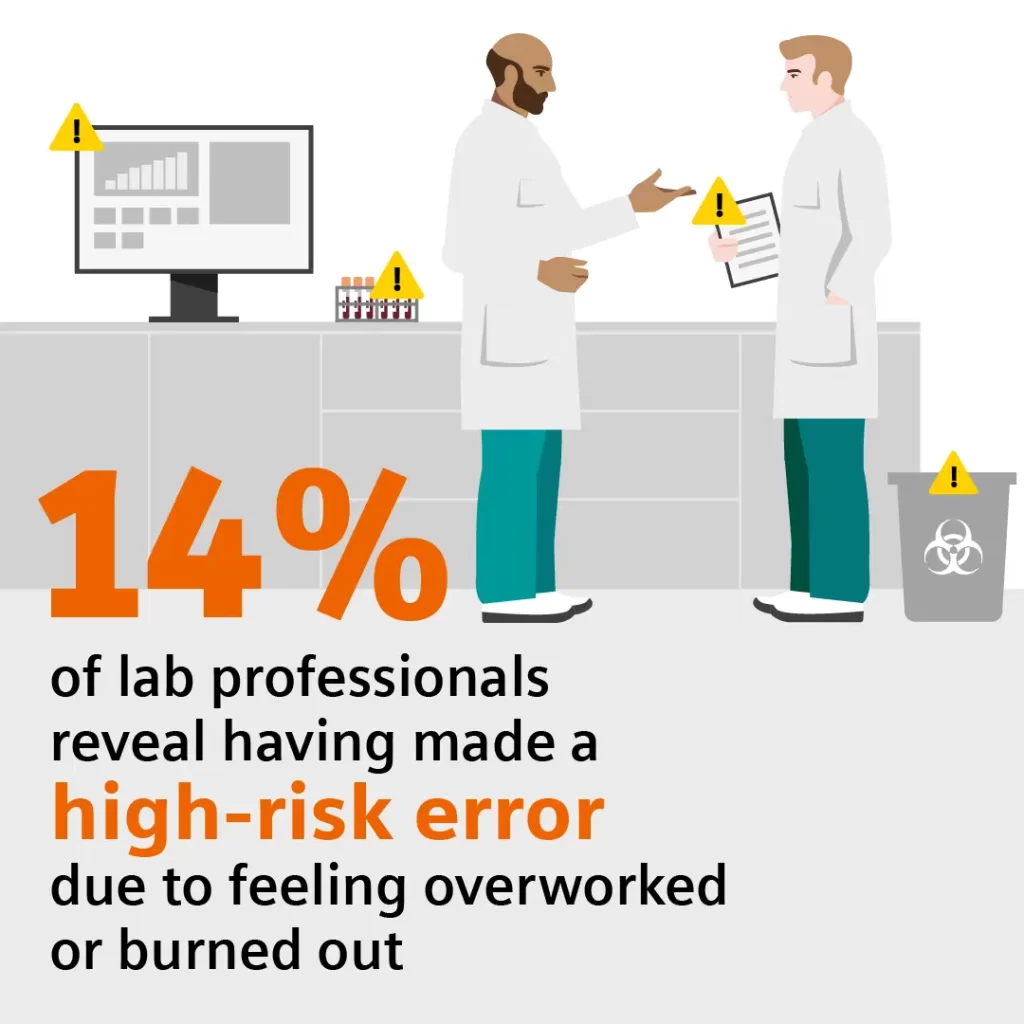
What You Should Know:
– A new survey by Siemens Healthineers and The Harris Poll sheds light on the pressing issue of understaffing and burnout within the clinical laboratory workforce. The study underscores the critical role of laboratory professionals in patient care and the urgent need for solutions to address these challenges.
– The survey was conducted by Siemens Healthineers and The Harris Poll between June 17 and 28, 2024, and included 408 U.S. laboratory professionals.
Lab Understaffing Leads to Burnout
With over 14 billion tests processed annually in the U.S., the demand for laboratory services continues to rise. However, the industry is grappling with a significant staffing shortage, with vacancy rates ranging from 7-11% and even reaching 25% in some areas. This understaffing has led to a surge in workload, increased burnout, and a heightened risk of errors.
The survey found that nearly two-fifths of laboratory professionals consider limited staff as their greatest challenge. The consequences of understaffing are severe, with 5% of labs reporting temporary closures due to insufficient personnel. These closures directly impact patient care, as laboratory results inform 70% of medical decisions.
Despite the challenges, laboratory professionals remain dedicated to patient care. A vast majority (95%) believe they are a critical part of the healthcare system and can positively impact patient outcomes. However, the pressure to deliver accurate and timely results while facing understaffing has led to a concerning level of burnout.
AI and Automation Adoption
To address these issues, the industry is turning to automation and AI. While there is some initial resistance to these technologies, with 52% of respondents expressing concerns about job security, the overwhelming majority (95%) agree that automation can improve patient care. By automating repetitive tasks, laboratory professionals can focus on higher-value activities such as quality control, mentoring, and complex analysis.
The survey also revealed a troubling rate of errors due to overwork and burnout. While most laboratory professionals have not personally made high-risk errors, many have witnessed them or are concerned about making them in the future.
In conclusion, the survey highlights the critical role of laboratory professionals in patient care and the urgent need to address the challenges of understaffing and burnout. Automation and AI offer promising solutions to improve efficiency, reduce errors, and enhance patient outcomes.
“The ability of lab professionals to reliably produce accurate test results under time constraints is foundational to patient care and trust in the healthcare system,” said Michele Zwickl, head of Laboratory Solutions for Diagnostics, Siemens Healthineers North America. “For years, laboratory professionals have raised staff frustrations amid rising test demand—now we have concrete data to illustrate the impact. To continue to perform to a high standard, some laboratories are waving the proverbial white flag and leaning into automation.”

